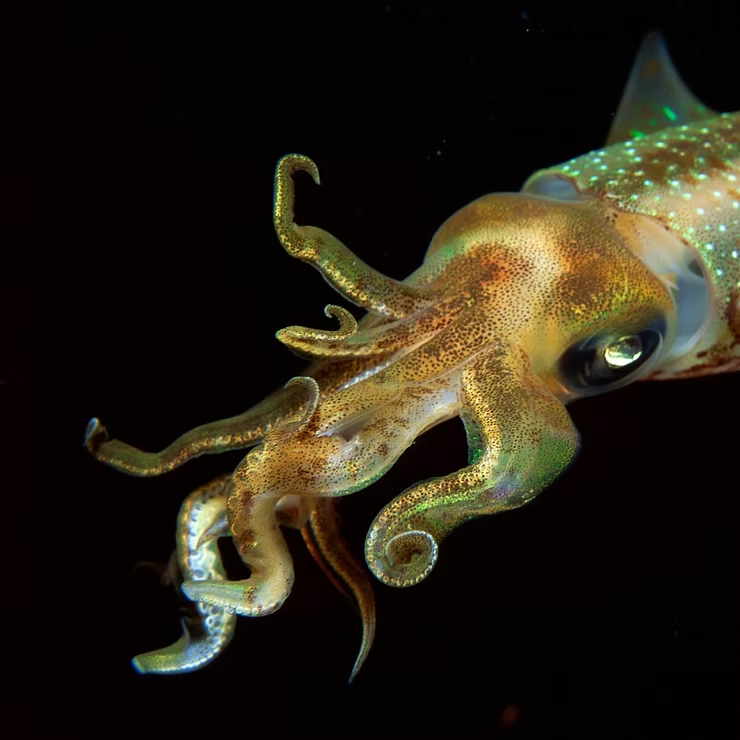The Ocean’s Food Web: A Living Network
The ocean’s food web is a breathtaking network linking microscopic plankton to the legendary giant squid. This complex system sustains marine ecosystems and provides resources vital to humanity. From twilight zone migrations to predator-prey interactions, every link ensures balance beneath the waves. Yet, human activities are straining this intricate web, making conservation more urgent than ever.
Diving into the Twilight Zone
The Great Migration of the Deep
Every night, trillions of twilight zone creatures ascend toward the surface. Lanternfish, siphonophores, and other deep dwellers form part of the largest daily animal migration on Earth. As they feed on surface plankton and release carbon-rich waste, they act as living carbon pumps, transporting nutrients back to the depths and influencing climate stability.
- This migration has shifted deeper over time, signaling changing ocean conditions.
- It is vital for nutrient cycling and carbon sequestration.
- Encounters with vast shoals of lanternfish reveal the abundance hidden in the twilight zone.
Lanternfish: Abundant but Overlooked
Lanternfish form a massive biomass in the ocean and serve as a crucial food source for predators. Their nightly vertical migration helps cycle nutrients and maintain ecosystem balance. Though small, they remind us of the unseen forces keeping the oceans alive.
Masters of Camouflage and Light
The Strawberry Squid
With mismatched eyes and glowing photophores, the strawberry squid has evolved remarkable adaptations. One eye gazes upward for shadows, the other scans below for glowing prey. Their red bodies vanish in the depths, while bursts of bioluminescence confuse predators. These traits have inspired advances in robotics and low-light technology.
The Glass Squid
Glass squids use transparency and chromatophores to shift from near-invisibility to camouflage. This dual strategy makes them elusive prey and showcases the extraordinary survival tools of twilight zone dwellers.
Bioluminescent Defenses
Bioluminescence is a universal shield in the deep. Creatures like Atolla jellies spin dazzling spirals of light to confuse predators, while others use glowing patterns to lure prey or signal mates.
The Unsung Heroes: Plankton
Plankton form the foundation of the food web. Phytoplankton capture carbon and produce oxygen, while zooplankton like copepods transfer energy up the chain.
- They sustain fish, whales, and countless marine animals.
- They regulate Earth’s climate through carbon capture.
- Microplastic pollution threatens their survival and disrupts the web.
Despite their size, plankton are essential to ocean health and climate stability.
Nocturnal Predators and Prey
Dolphins and Sharks on the Night Hunt
As darkness falls, dolphins and sharks dominate the twilight zone. Dolphins use echolocation, while sharks rely on smell and electric-field detection. Their nocturnal hunts regulate populations and preserve food web balance.
Evasion Tactics
Survival in the twilight zone depends on concealment and adaptation. Species deploy transparency, ultrablack skin, vertical movements, or bursts of light to escape predators, turning the depths into a constant contest of hide and seek.
Threats to the Ocean’s Balance
Overfishing
Unsustainable fishing depletes stocks, disrupts predator-prey dynamics, and threatens human livelihoods. Without intervention, trophic cascades could unravel ecosystems.
Climate Change
Warming seas, shifting currents, and acidification are reshaping habitats and forcing species migrations. The delicate choreography of the food web is at risk as biodiversity declines under rising stress.
Conservation and the Future
Protecting the ocean requires bold steps: creating marine protected areas, reducing pollution, and adopting sustainable fishing. Initiatives like “30% by 2030” aim to safeguard ecosystems and biodiversity. Research in places like Monterey Bay deepens our understanding and sparks innovations in medicine, technology, and environmental monitoring.
Conclusion
From copepods to giant squids, every creature contributes to the ocean’s balance. Their migrations, camouflage, and adaptations highlight resilience and ingenuity shaped by survival. Yet, this balance depends on human responsibility. By protecting marine life, we preserve not only the ocean’s wonders but also the systems that sustain life on Earth.

